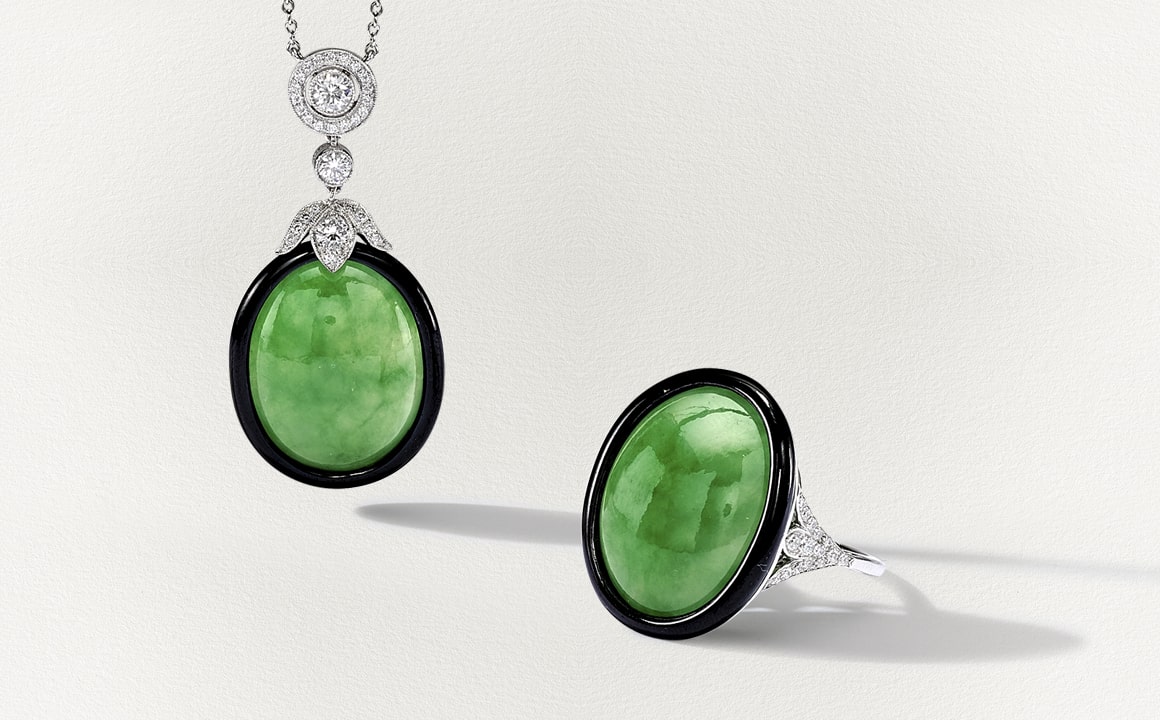Jadeite
Cherished by many cultures over thousands of years, the brightness of jade was considered by the philosopher Confucius to represent heaven.
Jadeite is a mineral often known by the more common name 'jade'. From a scientific angle, all rough cuts of jadeite and nephrite are called jade. Jewellery and ornamental carvings have been made from jade throughout history. Mayans and Aztecs regarded jade highly and the name ‘jade’ originates from the Spanish ‘piedra de ijada’, meaning ‘stone for the pain in the side’. It was named after Spanish explorers saw natives of Central America holding pieces of jade to their sides, believing that it could cure ills.
The Chinese refer to jade as 'Yu' which translates to 'heavenly' or 'imperial'; it was first mined in North Eastern China around 6000 BC. Artisan gem carvers in China had been operating for thousands of years, with intricate carvings being created for families; symbolic motifs included bats, which represented happiness, and butterflies, which symbolised a long life. It was the favourite of Empress Dowager Cixi, who loved its bright, vivid colours and was seen wearing stacks of jade bangles on both wrists. Chinese royalty and nobility have been buried with jade carvings and tokens in their tombs for thousands of years.

Jade was very precious in many ancient societies, and was often worth even more than gold. Jadeite symbolises prosperity, success and good luck. Imperial jade is regarded as the most precious variety of jade; it has a dark, lush green colour with high transparency.
In 2014, a necklace featuring jadeite beads, believed to be owned by a member of the Qing imperial court in the 18th century and more recently owned by heiress Barbara Hutton in 1933, was sold at auction for a record breaking £7.7 million. The beads were said to be perfectly translucent and of perfectly matched colour.
The jadeite and nephrite forms of jade are almost identical and it may be very difficult to distinguish the two. In fact, they were thought to be one mineral type until 1863, when it was discovered that they are scientifically different. Jadeite jade is the rarer and most valuable form of jade; the most common colour for both forms of jade is pale green. However, it is also found in black, white, red, yellow and lavender. Jade is naturally always very cool to the touch; even when placed in a warm environment it will remain cool.
Jade is valued on its colour, transparency, texture and carat weight. It is very often carved or cut into smooth cabochons to display its beautiful colour and fine texture.
Generic CLP Page

